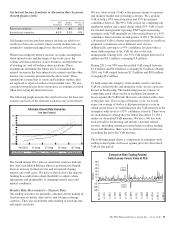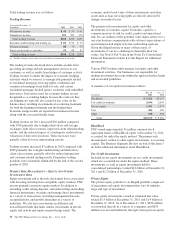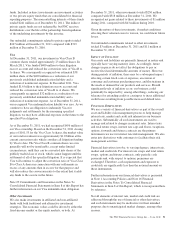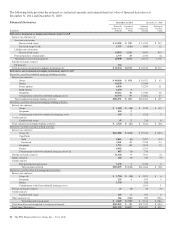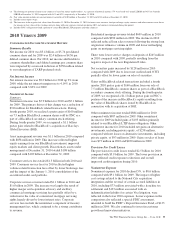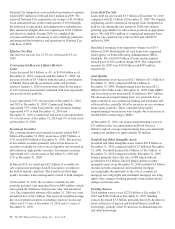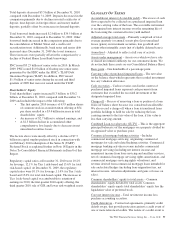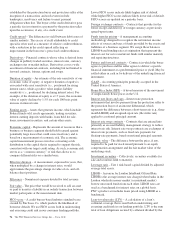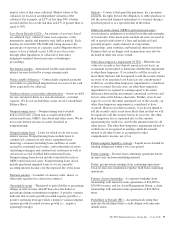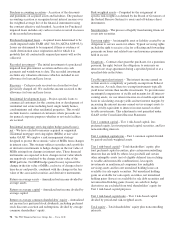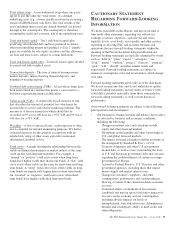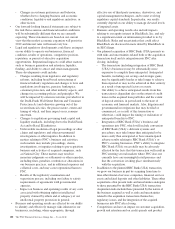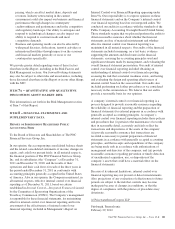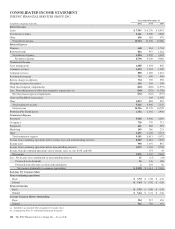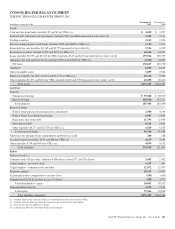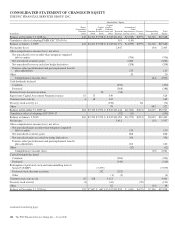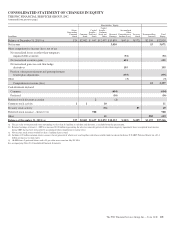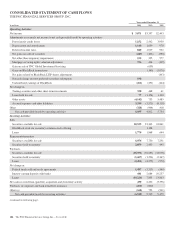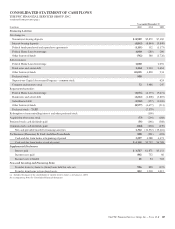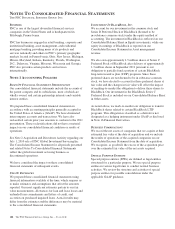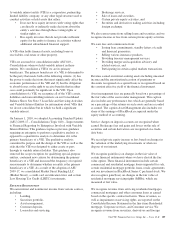PNC Bank 2011 Annual Report Download - page 108
Download and view the complete annual report
Please find page 108 of the 2011 PNC Bank annual report below. You can navigate through the pages in the report by either clicking on the pages listed below, or by using the keyword search tool below to find specific information within the annual report.
Total return swap – A non-traditional swap where one party
agrees to pay the other the “total return” of a defined
underlying asset (e.g., a loan), usually in return for receiving a
stream of LIBOR-based cash flows. The total returns of the
asset, including interest and any default shortfall, are passed
through to the counterparty. The counterparty is therefore
assuming the credit and economic risk of the underlying asset.
Total risk-based capital – Tier 1 risk-based capital plus
qualifying subordinated debt and trust preferred securities,
other noncontrolling interest not qualified as Tier 1, eligible
gains on available for sale equity securities and the allowance
for loan and lease losses, subject to certain limitations.
Total risk-based capital ratio – Total risk-based capital divided
by period-end risk-weighted assets.
Transaction deposits – The sum of interest-bearing money
market deposits, interest-bearing demand deposits, and
noninterest-bearing deposits.
Troubled debt restructuring (TDR) – A loan whose terms have
been restructured in a manner that grants a concession to a
borrower experiencing financial difficulties.
Value-at-risk (VaR) – A statistically-based measure of risk
that describes the amount of potential loss which may be
incurred due to severe and adverse market movements. The
measure is of the maximum loss which should not be
exceeded on 95 out of 100 days for a 95% VaR and 99 out of
100 days for a 99% VaR.
Watchlist – A list of criticized loans, credit exposure or other
assets compiled for internal monitoring purposes. We define
criticized exposure for this purpose as exposure with an
internal risk rating of other assets especially mentioned,
substandard, doubtful or loss.
Yield curve – A graph showing the relationship between the
yields on financial instruments or market indices of the same
credit quality with different maturities. For example, a
“normal” or “positive” yield curve exists when long-term
bonds have higher yields than short-term bonds. A “flat” yield
curve exists when yields are the same for short-term and long-
term bonds. A “steep” yield curve exists when yields on long-
term bonds are significantly higher than on short-term bonds.
An “inverted” or “negative” yield curve exists when short-
term bonds have higher yields than long-term bonds.
C
AUTIONARY
S
TATEMENT
R
EGARDING
F
ORWARD
-L
OOKING
I
NFORMATION
We make statements in this Report, and may from time to
time make other statements, regarding our outlook for
earnings, revenues, expenses, capital levels and ratios,
liquidity levels, asset levels, asset quality and other matters
regarding or affecting PNC and its future business and
operations that are forward-looking statements within the
meaning of the Private Securities Litigation Reform Act.
Forward-looking statements are typically identified by words
such as “believe,” “plan,” “expect,” “anticipate,” “see,”
“look,” “intend,” “outlook,” “project,” “forecast,” “estimate,”
“goal,” “will,” “should” and other similar words and
expressions. Forward-looking statements are subject to
numerous assumptions, risks and uncertainties, which change
over time.
Forward-looking statements speak only as of the date made.
We do not assume any duty and do not undertake to update
forward-looking statements. Actual results or future events
could differ, possibly materially, from those anticipated in
forward-looking statements, as well as from historical
performance.
Our forward-looking statements are subject to the following
principal risks and uncertainties.
• Our businesses, financial results and balance sheet values
are affected by business and economic conditions,
including the following:
– Changes in interest rates and valuations in debt,
equity and other financial markets.
– Disruptions in the liquidity and other functioning of
U.S. and global financial markets.
– The impact on financial markets and the economy of
the downgrade by Standard & Poor’s of U.S.
Treasury obligations and other U.S. government-
backed debt, as well as issues surrounding the level
of U.S. and European government debt and concerns
regarding the creditworthiness of certain sovereign
governments in Europe.
– Actions by Federal Reserve, U.S. Treasury and other
government agencies, including those that impact
money supply and market interest rates.
– Changes in customers’, suppliers’ and other
counterparties’ performance and creditworthiness.
– Slowing or failure of the current moderate economic
recovery.
– Continued effects of aftermath of recessionary
conditions and uneven spread of positive impacts of
recovery on the economy and our counterparties,
including adverse impacts on levels of
unemployment, loan utilization rates, delinquencies,
defaults and counterparty ability to meet credit and
other obligations.
The PNC Financial Services Group, Inc. – Form 10-K 99


